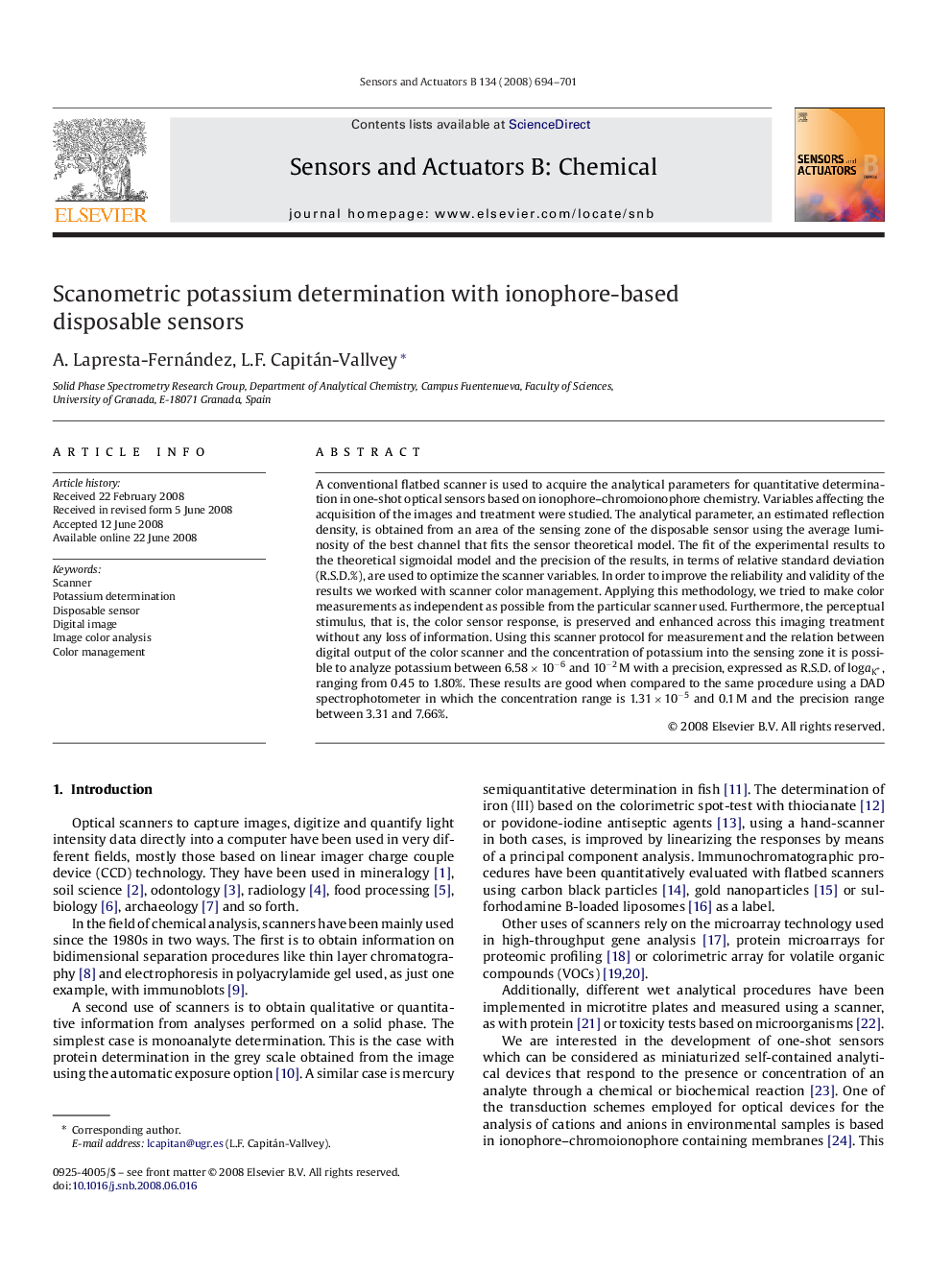| Article ID | Journal | Published Year | Pages | File Type |
|---|---|---|---|---|
| 741232 | Sensors and Actuators B: Chemical | 2008 | 8 Pages |
A conventional flatbed scanner is used to acquire the analytical parameters for quantitative determination in one-shot optical sensors based on ionophore–chromoionophore chemistry. Variables affecting the acquisition of the images and treatment were studied. The analytical parameter, an estimated reflection density, is obtained from an area of the sensing zone of the disposable sensor using the average luminosity of the best channel that fits the sensor theoretical model. The fit of the experimental results to the theoretical sigmoidal model and the precision of the results, in terms of relative standard deviation (R.S.D.%), are used to optimize the scanner variables. In order to improve the reliability and validity of the results we worked with scanner color management. Applying this methodology, we tried to make color measurements as independent as possible from the particular scanner used. Furthermore, the perceptual stimulus, that is, the color sensor response, is preserved and enhanced across this imaging treatment without any loss of information. Using this scanner protocol for measurement and the relation between digital output of the color scanner and the concentration of potassium into the sensing zone it is possible to analyze potassium between 6.58 × 10−6 and 10−2 M with a precision, expressed as R.S.D. of logaK+logaK+, ranging from 0.45 to 1.80%. These results are good when compared to the same procedure using a DAD spectrophotometer in which the concentration range is 1.31 × 10−5 and 0.1 M and the precision range between 3.31 and 7.66%.
